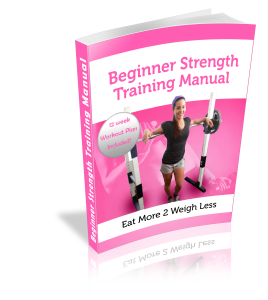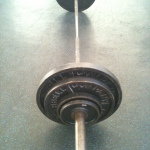Which rep range is best for fat loss? Muscle building? General strength?
Weight lifting isn’t just about simply picking any workout on the internet, any DVD off the shelf, or any random dumbbell and doing any amount of reps you prefer. Every rep range performs a purpose, and it’s beneficial to hit them all at some point. The 3-part video series below breaks down the basics of the main three rep ranges of lifting: Strength, Hypertrophy, and Endurance.
Understanding the differences between them all can help you when putting together your own lifting program.
Video 1 discusses the Strength phase.
Strength is typically categorized as lifting as heavy as possible, for anywhere from 1-7 repetitions. Rest periods can be as short as 60 seconds if working opposing muscle groups (chest/back), or as long as 3-5 minutes. The lower the amount of reps, the longer the rest is required to replenish the muscles with the energy needed to hit it hard again at the same intensity level. Rest periods and all out effort are essential during this phase. Shortening the rest periods during true “strength” training phases typically is a sign of not pushing hard enough during the set, which essentially turns the workout into either a hypertrophic or endurance based one (phases discussed in next video).
Video 2 discusses the Hypertrophy and Endurance phases.
Hypertrophy is the phase used for adding size to the muscle. During this phase you are lifting as heavy as possible (meaning you can’t eek out any extra reps), for around 8-12 repetitions. Rest periods are usually 30-60 seconds, depending on if you are supersetting with opposing muscle groups (chest/back). Lower rest times are needed during supersets because one muscle is resting while the other is working.
Endurance is the phase that increases endurance of the smaller muscles, allowing the larger muscles to work at full capacity (without the smaller muscles failing) in the other phases. This phase is very cardiovascular in nature, with rest periods of 30 seconds or less. The higher the amount of reps, the less rest is required, so most circuit and DVD type workouts will fit into this phase category.
Video 3 discusses how the rep ranges come together for each individuals needs (periodization). When focusing on a particular goal, you will likely spend the majority of your time in the rep range that most directly corresponds to the end goal. However, you can still dip into other rep ranges as necessary in order to enhance the benefits of the other phases when you return to them. Try not to view any rep range as completely useless. When it comes to goals like fat loss and muscle building, periodization can be a key attribute in preventing plateaus by essentially sending your body through a faux “newbie gain” phase every time you return to your main rep range. Win, win!
I hope you enjoy this series, fam! Of course, all this info and more is included in our Beginner Strength Training Manual. 
Let me know if this helps you…or if I just made it more confusing. LOL. If you have any other questions, or need more clarification (from this or any other vid/blog), drop me a line below!
~Kiki :)
SUBSCRIBE to our YouTube Channel for weekly info and motivation.

Should you just do cardio to lose weight? How heavy is heavy lifting? Do "strength" DVDs count? What if you don't want to lift? Sign up now for in-depth info on strength training and fat loss. You'll also receive special vids and free workout plans to help you get the most from your time in the gym.
No worries, we hate spam too!
Discover more from Eat More 2 Weigh Less
Subscribe to get the latest posts sent to your email.





Recent Comments